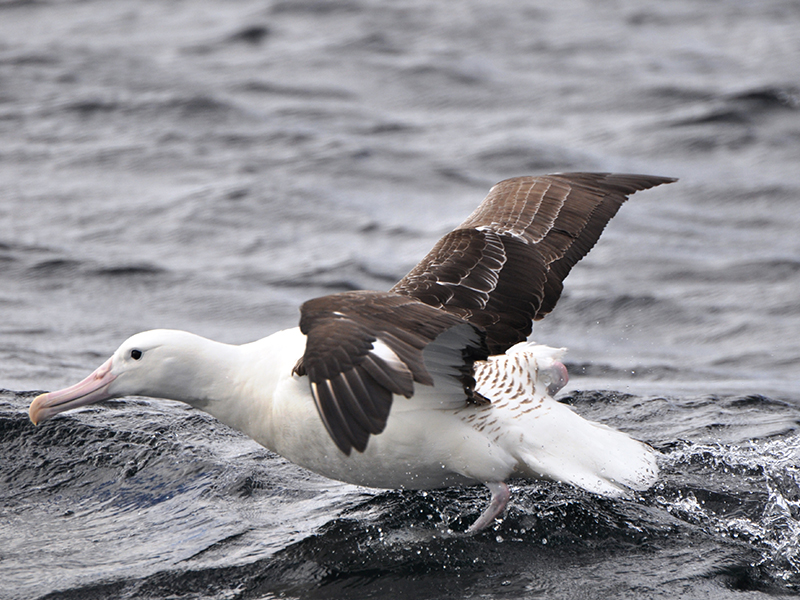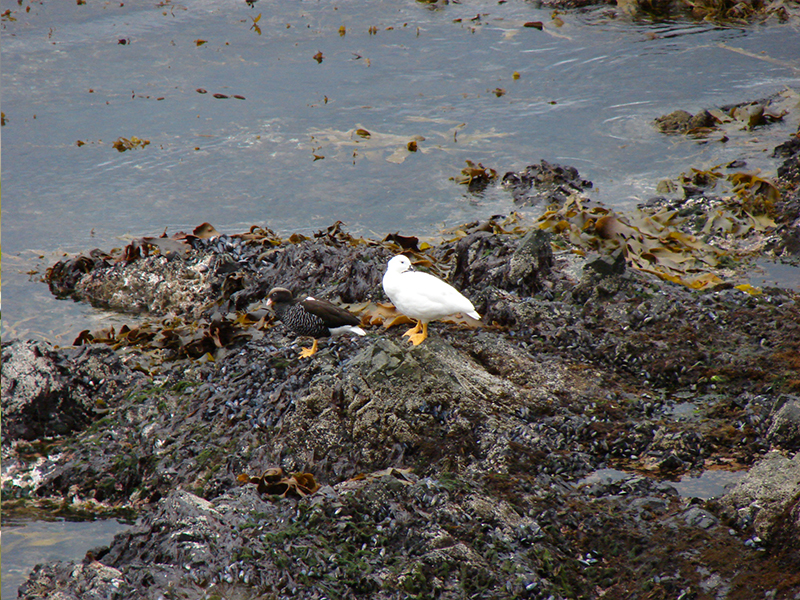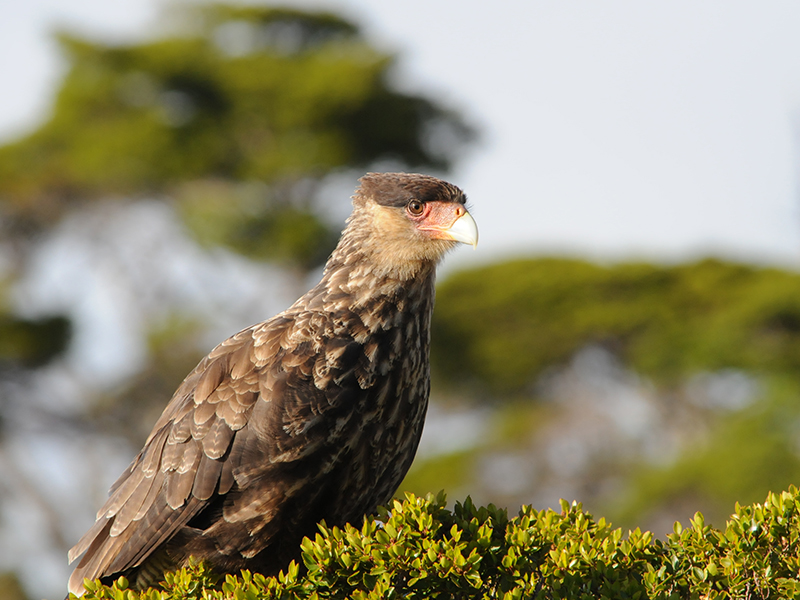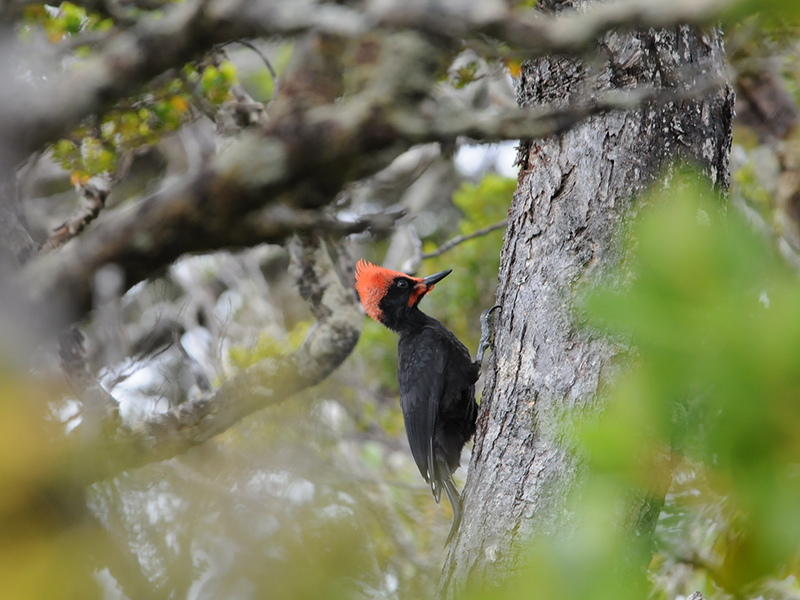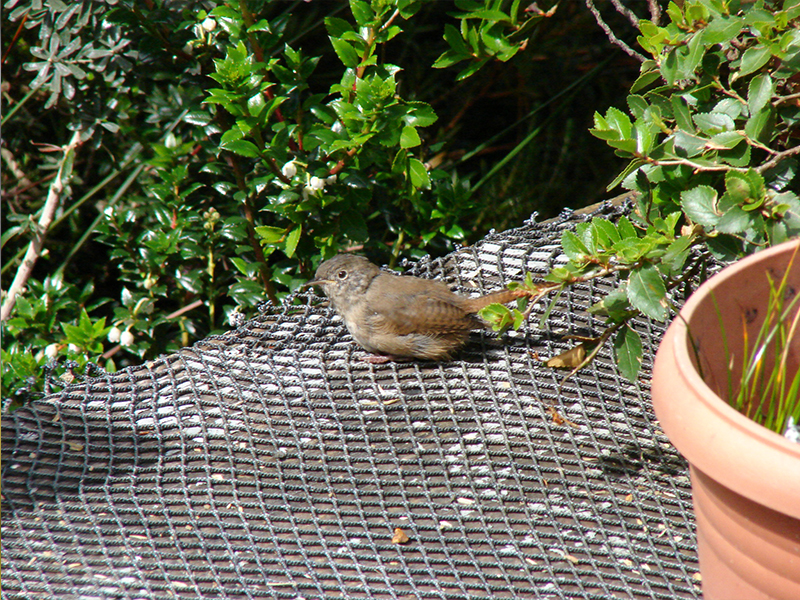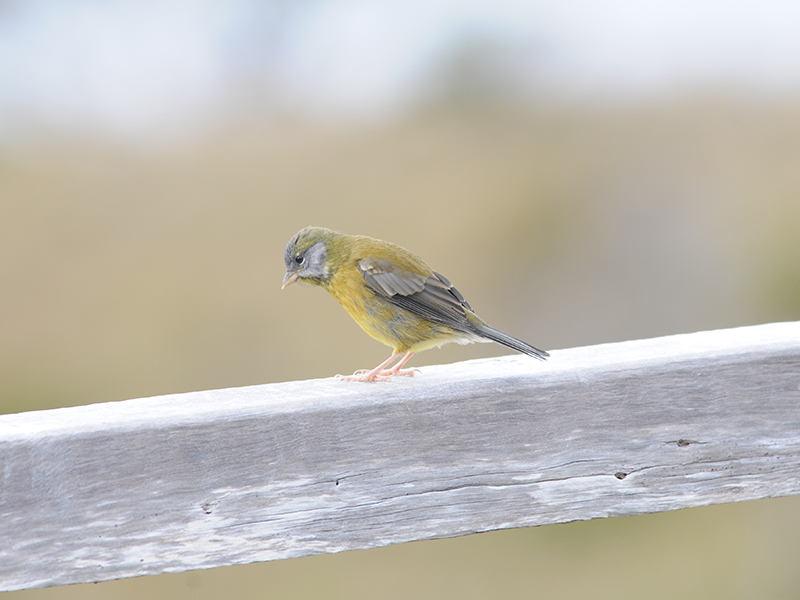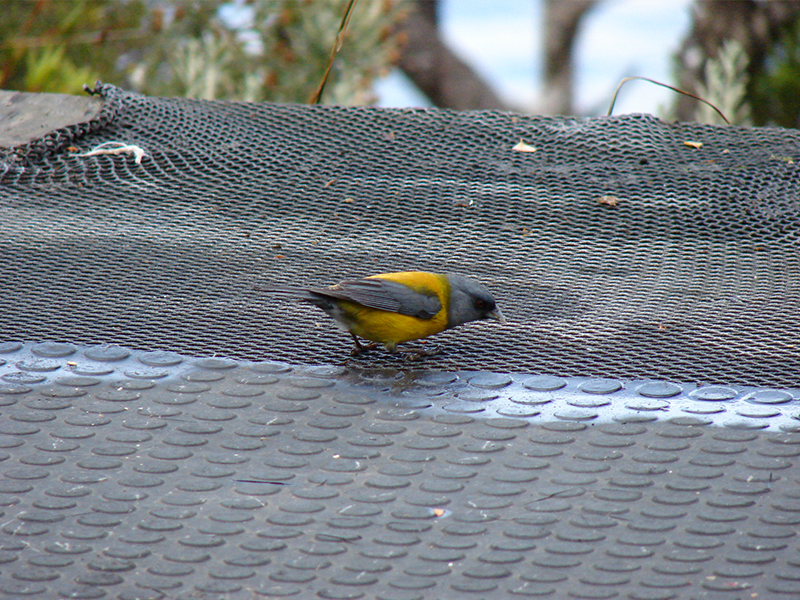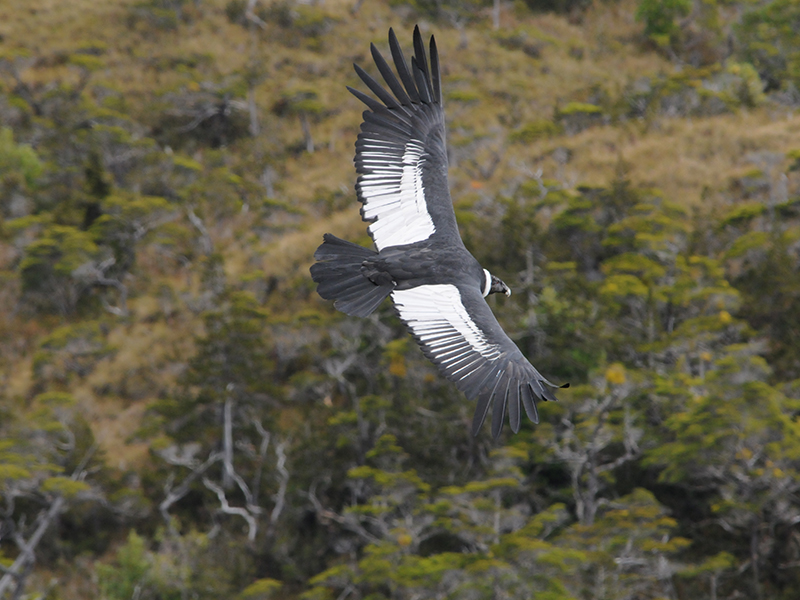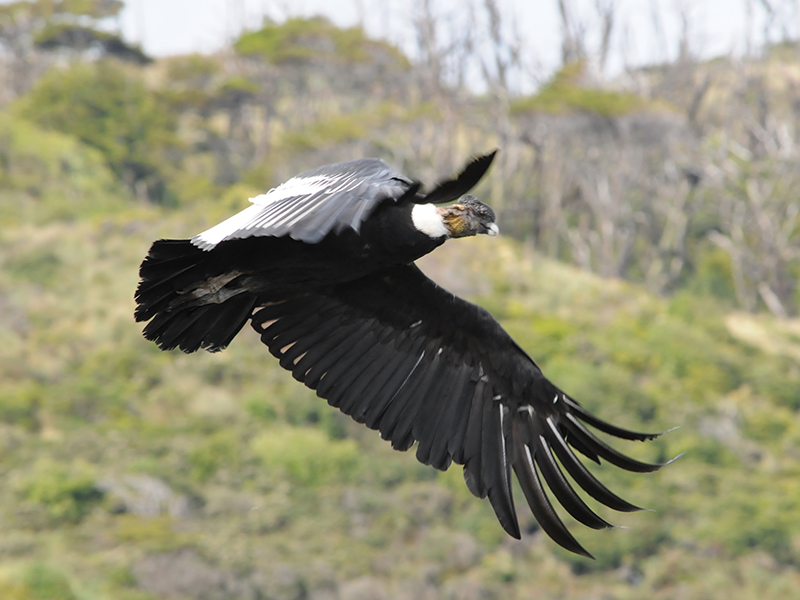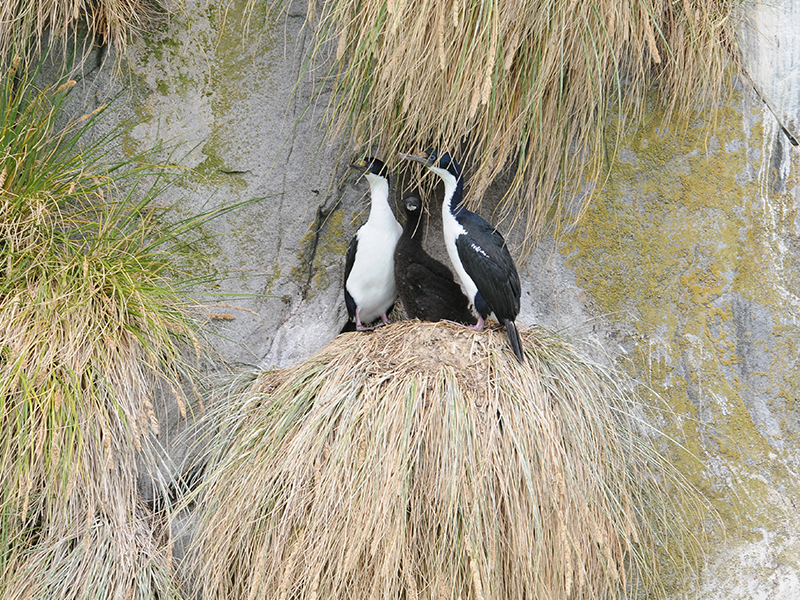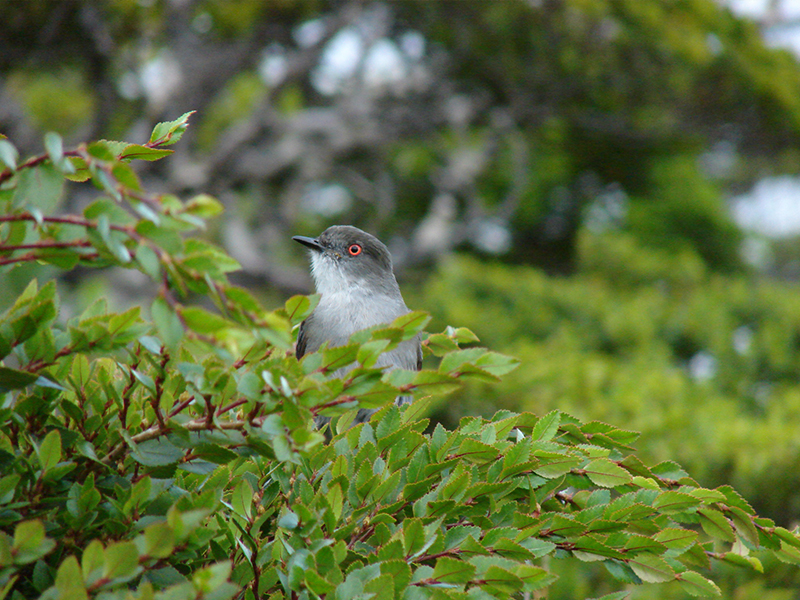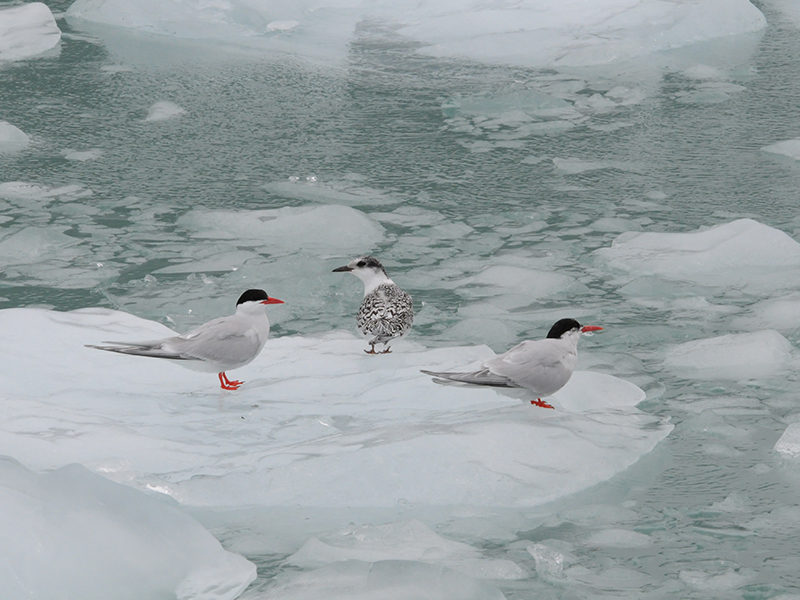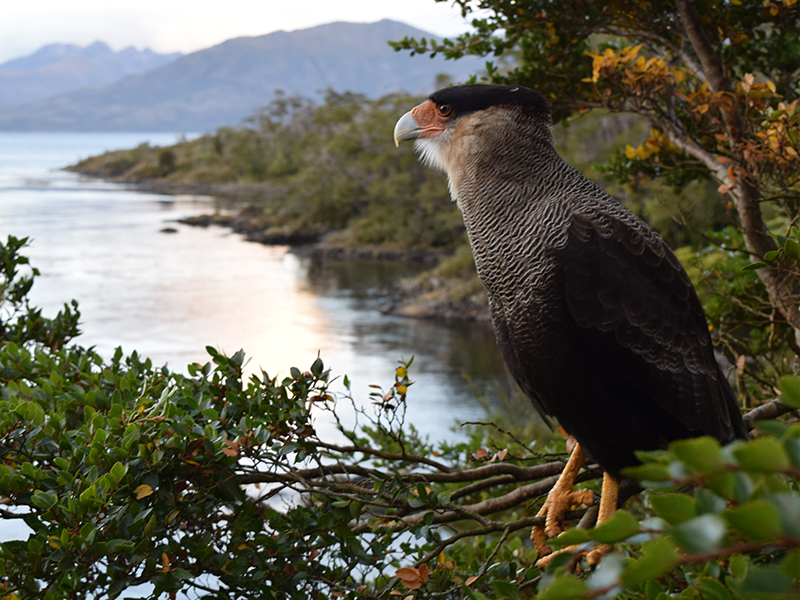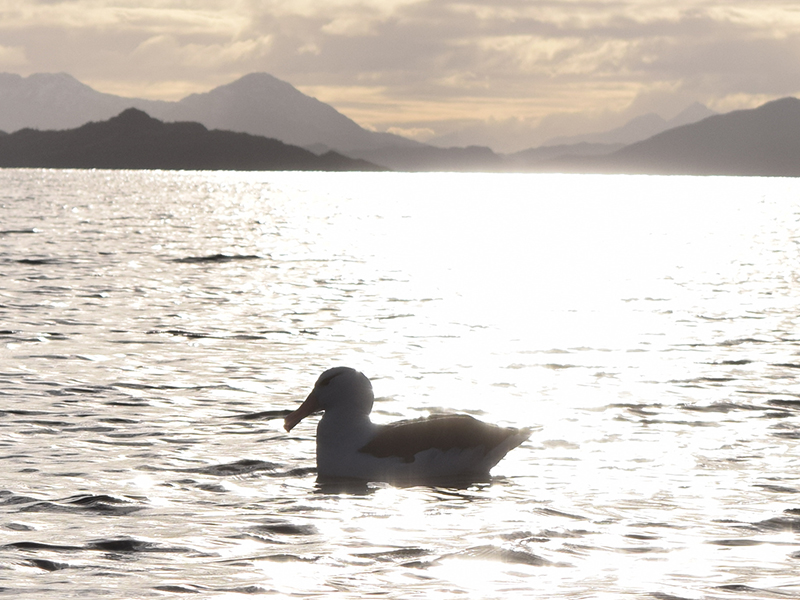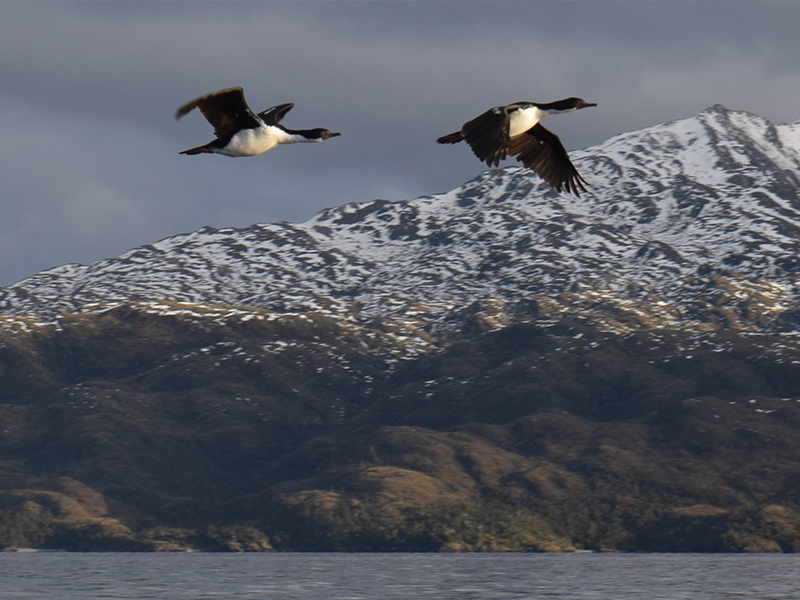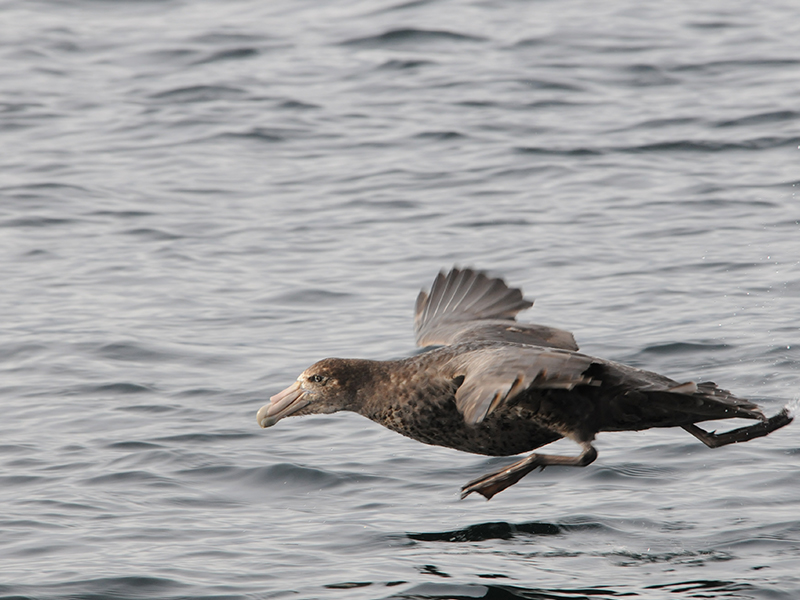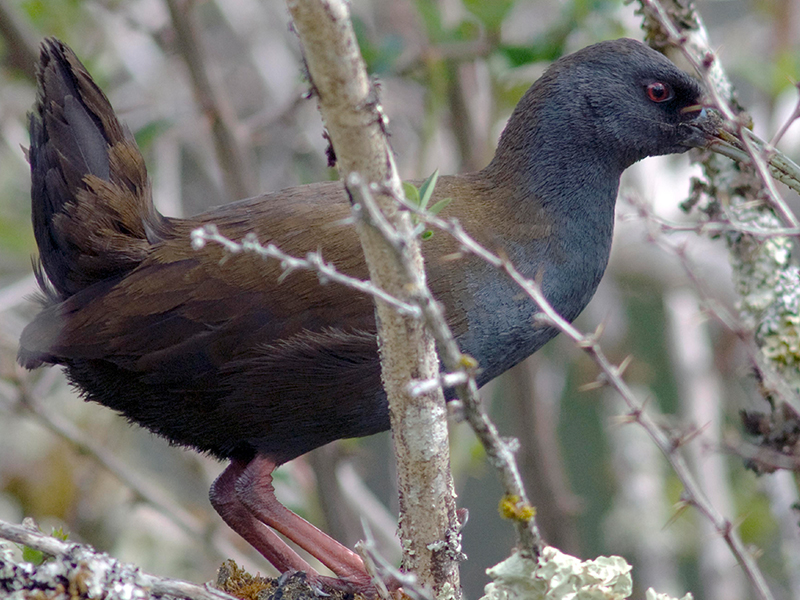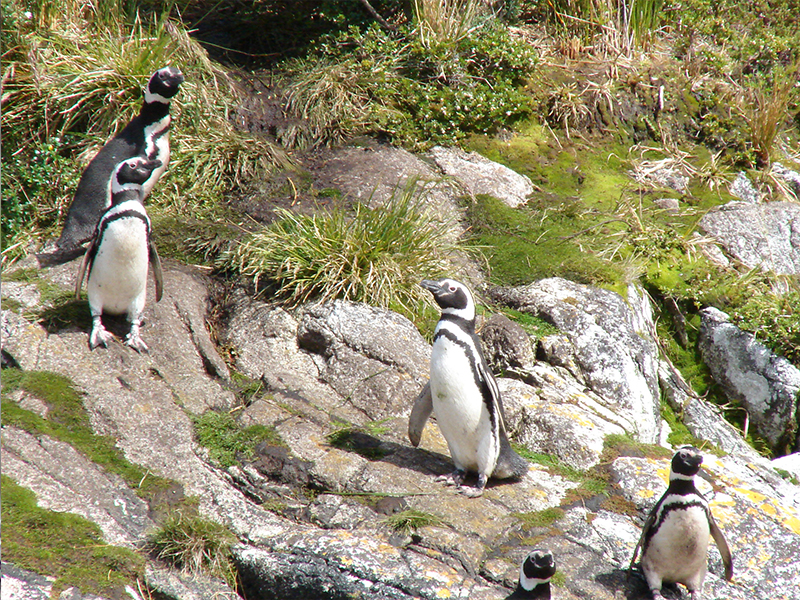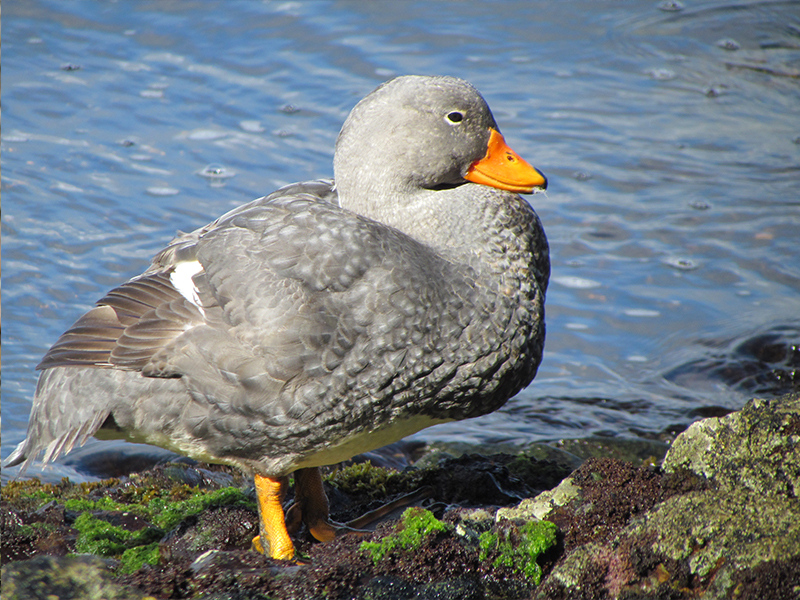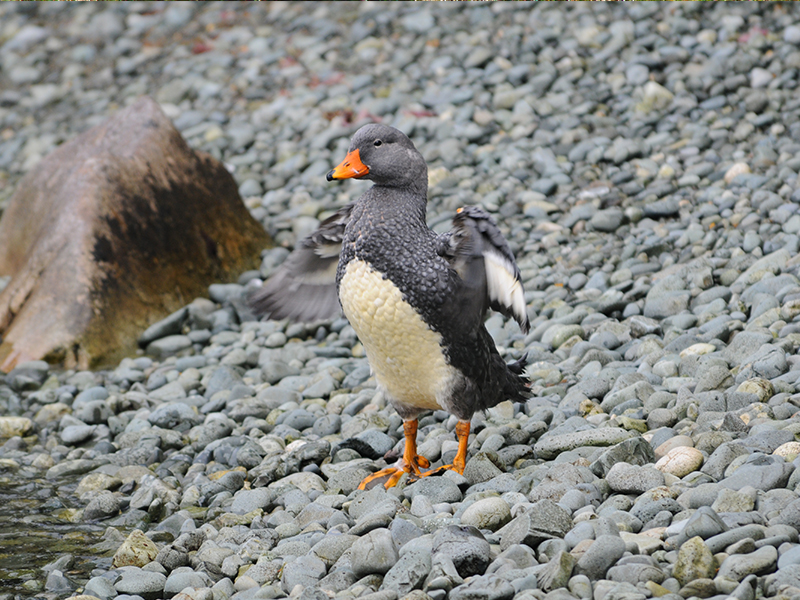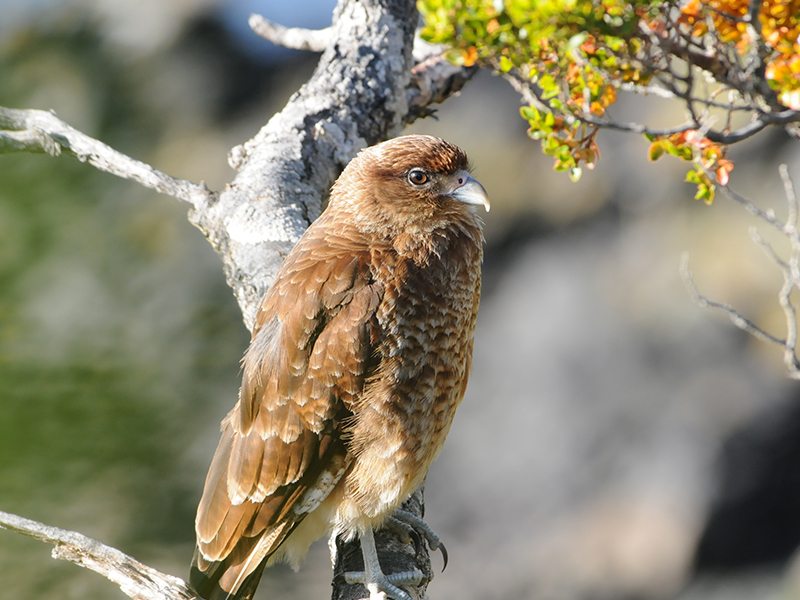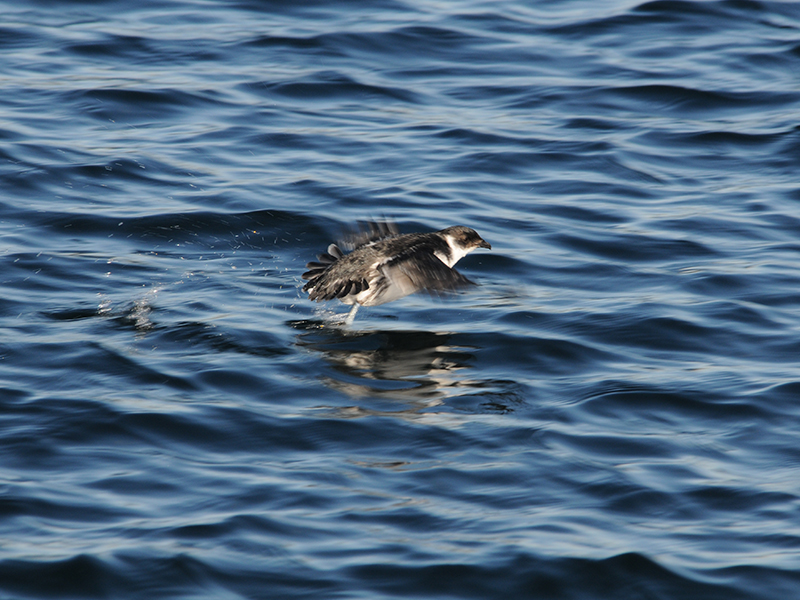Land and Sea Birds
In Francisco Coloane Marine Park you can see three well-defined groups of birds; those who live mainly in the sea, where stand those species of birds that visit the area during the summer to feed, where the most abundant is the black-browed albatross, which nests in the subantarctic islands and Patagonia ; other species are also abundant Magellanic penguins, the skua, Cataharacta chilensis, both nesting during the spring and early summer in Rupert island, EcoCamp against Whalesound on the island Carlos III. Another abundant species is the imperial cormorant, Phalacrocorax atriceps, which nests in small colonies on the cliffs of the area, and is particularly abundant in the Barbara Channel and the Bay St. Agnes. During the spring and early summer, the South American tern, Sterna hirundinacea, is very abundant and fed with humpback whales, then disappears. A less common species, whose biology little is known, is the yunco Magellanic Pelecanoides magellanicus, is likely to nidifique in some of the islands in the area, but have not confirmed this. Less common species are the cormorant rock, rock shag, the giant petrel, Macronectes giganteus, silver petrel, southern fulmar, and other species of albatrosses and petrels.
Las costas de islas, canales y fiordos son habitadas por dos especies muy conspicuas, la caranca, Chlophaga hybrida, y el pato quetru no volador, Tachyeres pteneres, a ambas especies se les puede ver con sus polluelos en las costas rocosas. Otras aves de estos ambientes, que son frecuentes de observar son el Martín pescador, Ceryle torquata, los churretes, Cinclodes spp.
Las aves terrestres habitan principalmente asociadas al bosque que se desarrolla en quebradas y costas poco expuestas al viento; destacan el carpintero negro, Campephilus magellanicus, el comesebo grande, Pygarrhichas albogularis, el fío fío, Elaenia albiceps, que migra desde la Amazonía, donde pasa el invierno, y varias otras especies pequeñas, como el cachudito, Anairetes parulus, el diucón, Xomlis pyrope, el jilguero, Carduelis barbata, el cometocno, Phrygilus gayi, entre varias otras. Junto a esteros y pequeños cursos de agua, es posible de observar al churrín del sur, Scytalopus magellanicus y en pastizales húmedos, a la becasina, Gallinago paraguaise. Entre las aves rapaces, el condor, Vultur gryphus, es posible de observar volando o asociado a las colonias de lobos marinos, y en el bosque habitan el tiuque, Mivago chimango, el traro, Caracara plancus, y muy ocasionalmente se ha podido observar al carancho negro, Phalcoboenus australis.
The coasts of islands, channels and fjords are inhabited by two very conspicuous species, caranca, Chlophaga hybrida, and quetru flightless duck, Tachyeres pteneres, both species they can see with their chicks on rocky shores. Other birds of these environments, which are frequently observed are Kingfisher, Ceryle torquata, the rivulets, Cinclodes spp.
Land birds live mainly associated with forest develops little streams and coasts exposed to the wind; highlights the black carpenter, Magellanic woodpecker, the largest comesebo, white-throated treerunner, the trust trust, Elaenia albiceps, which migrates from the Amazon, where he spends the winter, and several other small species such as cachudito, Tufted Tit-Tyrant, the Diucón, Xomlis pyrope, the goldfinch, black-chinned siskin, the cometocno, Phrygilus gayi, among several others. Along with swamps and small streams, it is possible to observe the churrín south, Scytalopus magellanicus and wet grasslands, the snipe, Gallinago paraguaise. Among raptors, the condor, Vultur gryphus, it is possible to observe flying or associated with colonies of sea lions, and the forest inhabit the tiuque, Mivago chimango, the Traro, southern crested caracara, and very occasionally has been observed to carancho black, striated caracará.






